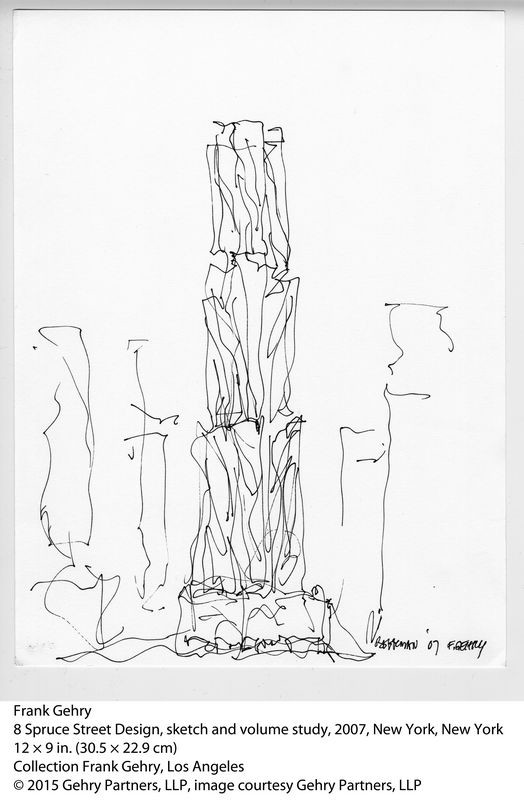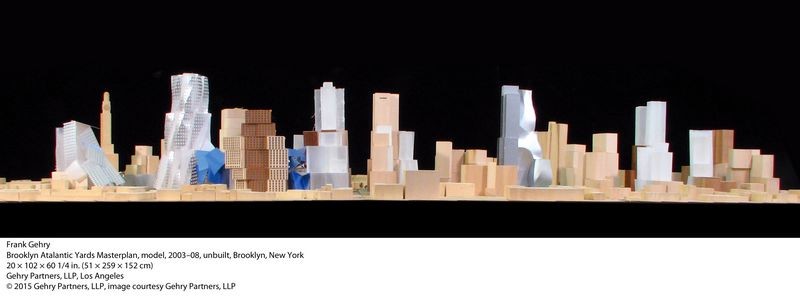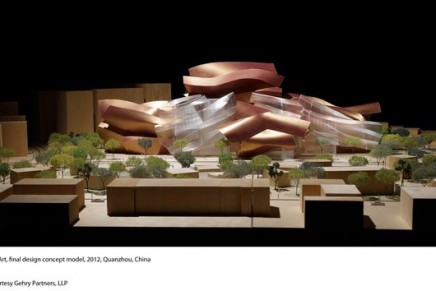One of the world’s most celebrated and innovative architects on view at LACMA: Frank Gehry.
The Los Angeles County Museum of Art (LACMA) presents the United States premiere of Frank Gehry, a major retrospective examining the prolific body of work of one of the world’s most celebrated and innovative architects. Canadian-born, Los Angeles–based architect Frank O. Gehry has revolutionized architecture’s aesthetics, social and cultural roles, and its relationship to the city. His understanding of a city’s heterogeneous and fluid nature has distinguished him as a revolutionary urbanist
Frank O. Gehry has revolutionized architecture’s aesthetics, social and cultural roles, and its relationship to the city. His
understanding of a city’s heterogeneous and fluid nature has distinguished him as a revolutionary urbanist. Gehry’s works—from his residence in Santa Monica (1977–78) to Walt Disney Concert Hall (1989–2003) in downtown losangeles and Fondation Louis Vuitton (2005–14) in Paris—question a building’s means of expression, a process that has originated new methods of design and technology as well as an innovative approach to architectural materials.
Tracing the arc of Gehry’s career from the early 1960s to the present, the exhibition focuses on two overarching themes: urbanism and the development of digital design and fabrication, specifically his use of CATIA Digital Project, a software tool that Gehry developed, which allows the digital manipulation of three-dimensional information. Organized by the Centre Pompidou, Musée National d’Art Moderne, Paris, Frank Gehry examines a total of over 60 projects through more than 200 drawings, many of which will be on view for the first time, as well as 66 models that illuminate the evolution of his architectural process.
In addition, the LACMA presentation includes new models not previously seen in the Centre Pompidou’s exhibition, representing buildings currently being designed or in the process of construction. These projects include Facebook’s new campus, the Philadelphia Museum of Art’s renovation, and Gehry’s most recent residential designs—both private residences and large-scale developments.
“Frank Gehry is one of Los Angeles’s cultural icons, whose influence on international architecture and urbanism cannot be
understated,” said Michael Govan, LACMA CEO and Wallis Annenberg Director.
“Gehry’s work has been based on the interrogation of architecture’s means of expression, a process that has brought with it new methods of design and a new approach to materials. No other exhibition has ever assembled so many projects to offer a reading of this highly distinctive architectural language,” said Frédéric Migayrou, deputy director of the Centre Pompidou and exhibition curator.

“Constantly redefining the boundaries of contemporary architecture, Frank Gehry has transformed the domestic and international architectural landscape and represents the apex of contemporary architecture. By presenting sketches and models of built and unbuilt projects, together with documentation of completed buildings, this retrospective reveals the evolution of Gehry’s thinking as well as the processes of one of the great architectural minds of our time,” added Stephanie Barron, with whom Gehry has designed six exhibitions.
After moving from Toronto to Los Angeles in 1947, Gehry graduated with a degree in architecture from the University of Southern California in 1954 and studied city planning at the Harvard University Graduate School of design. In 1962, Gehry established his Los Angeles office in Santa Monica, California. As his reputation grew, Gehry received more prominent, high-budget commissions that allowed him to realize complicated and ambitious designs for which he was awarded the prestigious Pritzker Architecture Prize in 1989. Frustrated that the forms he wanted to build could not be translated properly into two- dimensional plans, Gehry adapted CATIA—a software tool used in the aeronautics and automobile industries that allows the digital manipulation of three-dimensional representations—to facilitate the construction and engineering of his radical designs. Equipped with this new software, Gehry entered a prolific period of architecture design that has continued to this day with projects all over the globe.
This digital approach was initially applied on the fish sculpture for the Olympic Village in Barcelona (1989–92), Nationale-Nederlanden Building (1992–96), then on the unrealized Lewis Residence project (1989–95), and the Guggenheim Museum Bilbao (1991– 97).
In 2002, the architect founded Gehry Technologies, which was dedicated to the research and development of digital technologies. The use of CATIA became a bridge between architects and the building contractors, who could now estimate costs more accurately and produce increasingly complex forms. Without this major advance in the field, some of Gehry’s most iconic buildings, such as Walt Disney Concert Hall (1989–2003) and Fondation Louis Vuitton (2005–14), could not have been constructed. To trace the development of Frank Gehry’s architectural achievements, the exhibition is divided into six conceptual themes that are organized chronologically, with urbanism at the core.


Frank Gehry @ LACMA
September 13, 2015–March 20, 2016 Resnick Pavilion
LACMA.org































